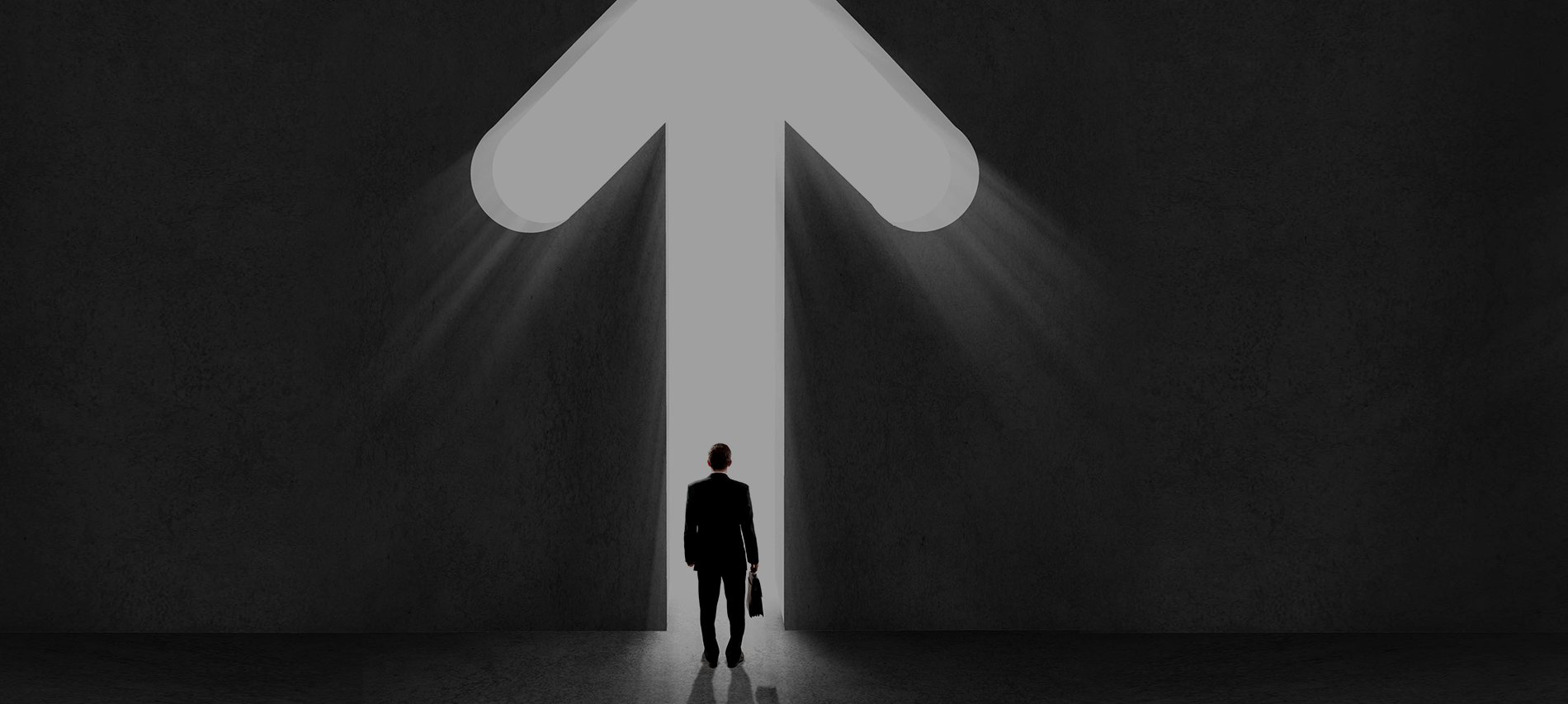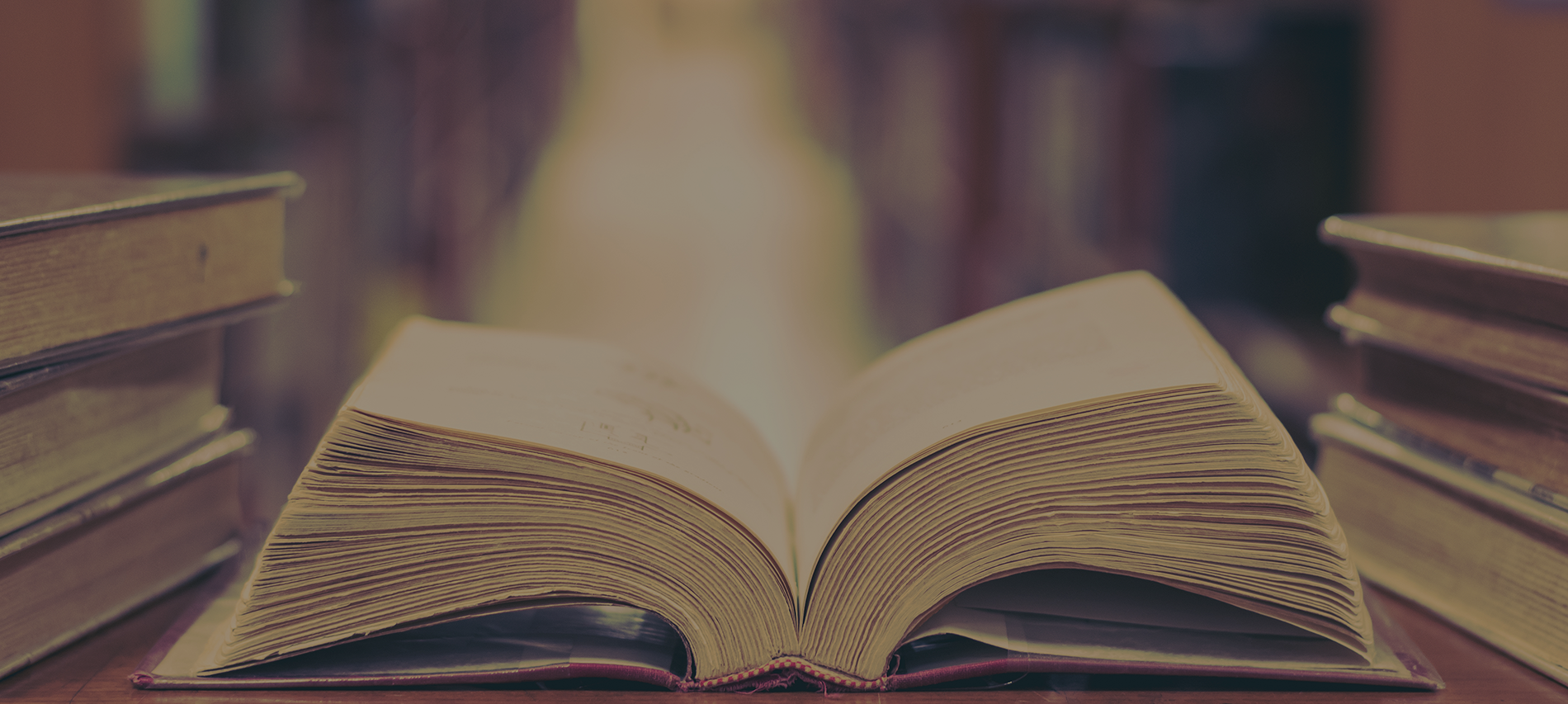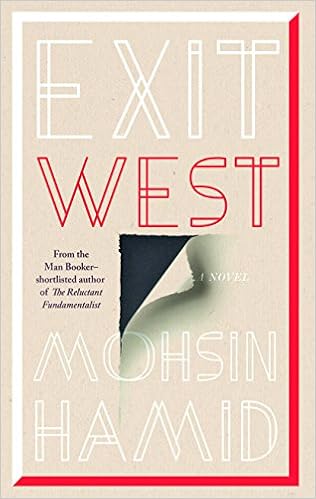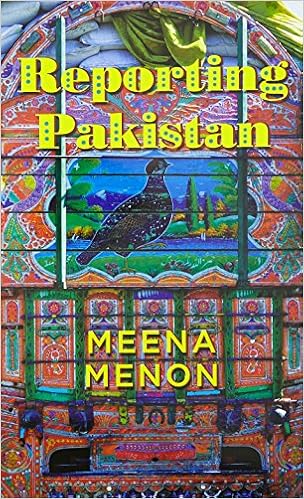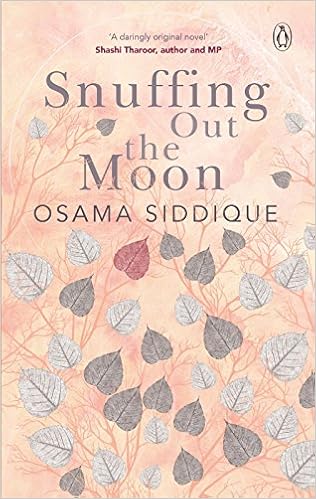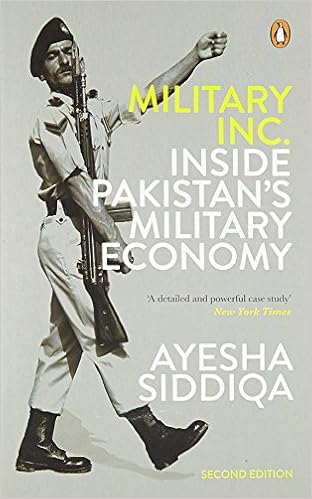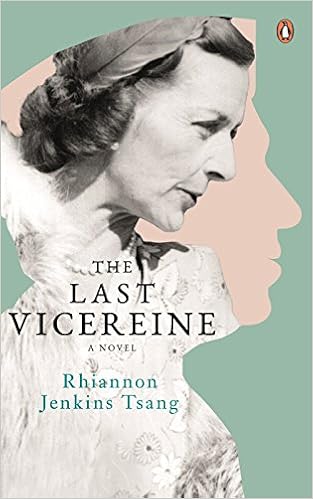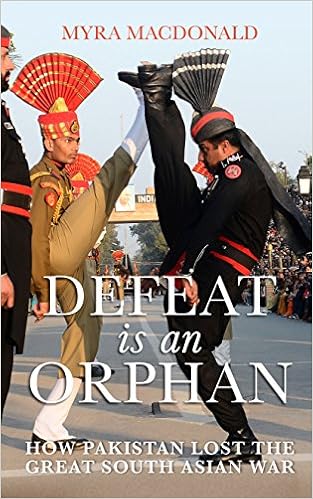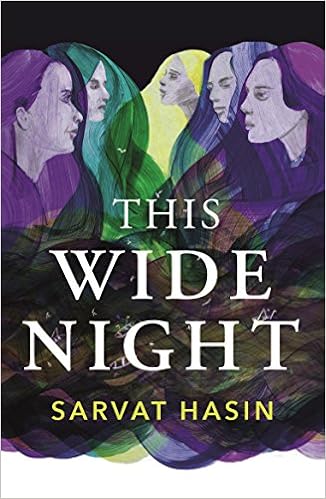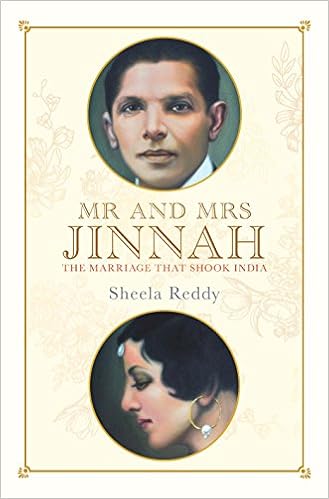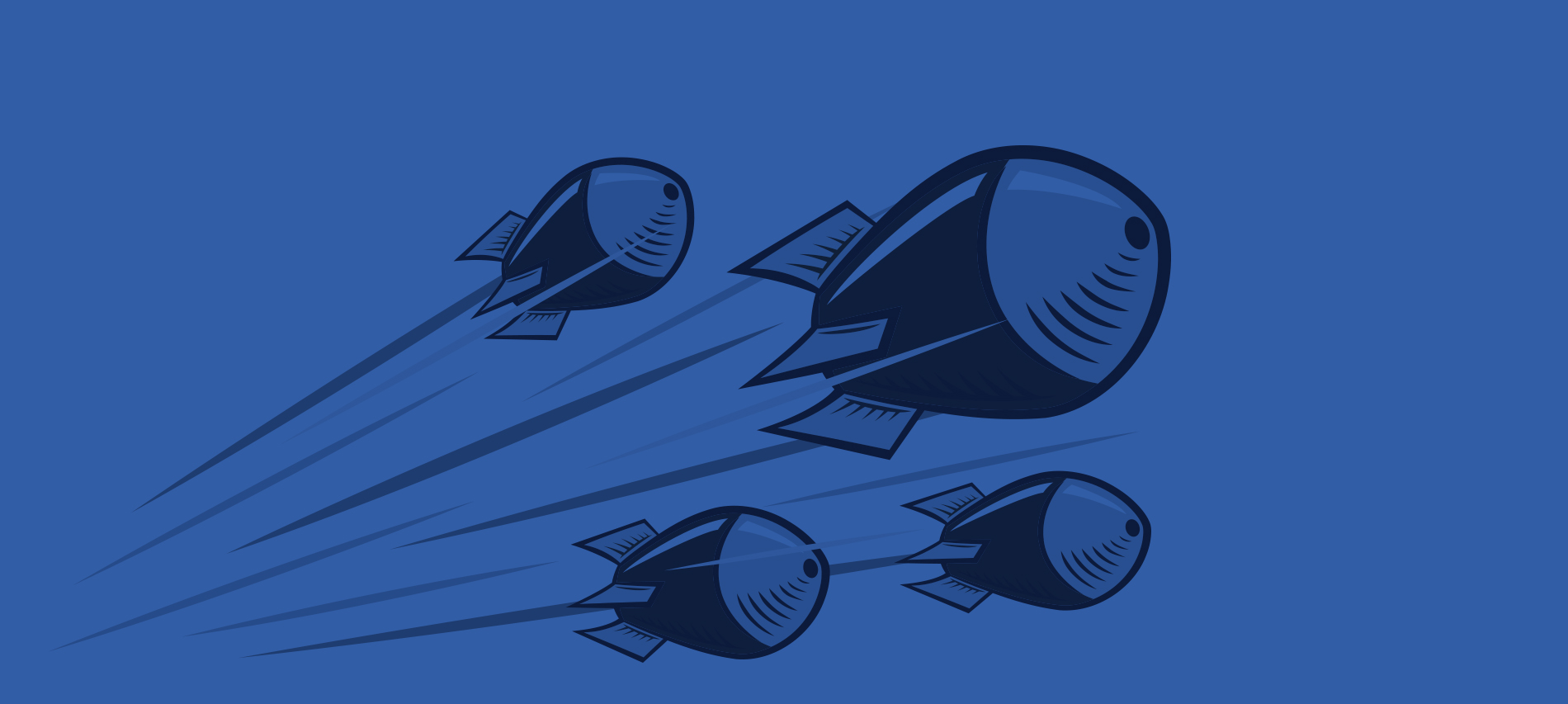Shivoham is one of India’s foremost fitness trainers. In his book,‘The Shivfit Way’ he shows how to work out without any equipment or machines. He combines cardio, strength training and weight exercises for a full-body workout. He also offers a whole new perspective on what it means to be fit and how to motivate yourself to start exercising. This book is coauthored by Shrenik Avlani, who is a newsroom veteran with nearly two decades of work experience as a leading writer in the field of endurance sport and fitness.
The Merriam-Webster dictionary defines fitness as ‘the quality or state of being fit’, while fit is defined as ‘sound physically and mentally’. Though the word was first used in 1580 ad, its dictionary definition does not tell us much about what fitness actually is.
We have seen triathletes compete in Ironman races which involve swimming 3.86 kilometres, followed by cycling 180.25 km and then immediately running a full marathon of 42.195 km, being crowned the fittest men and women in the world. but put them in a gym and ask them to lift weights, and you will find that they fare rather poorly. Even a boy or girl of average strength will be able to lift more than the fittest men and women on earth if endurance sport is the measure of fitness, as it mainly enhances the aerobic capacity of an individual.
But walk into a weightlifting clinic or lifter training for the Olympics and you would find the smallest of them lifting much more than their body weight. Lifters usually describe their colleagues as strong, not fit. Now ask them to run a couple of kilometres or swim just 500 metres, you are most likely to see them struggling and gasping for breath pretty quickly. so, strength alone also cannot be a parameter to measure fitness.
Clearly, fitness means different things to different people. Depending on who you ask, fitness is likely to be defined in terms of things people are good at or specialize in. For a runner, being able to run a full marathon in under four hours is being fit. For a body-builder, big muscles are clear indicators of fitness. Then again, talk to weightlifters, and they will tell you that their ability to lift weights three times heavier than themselves is proof of their fitness. For the average person, fitness could mean something as simple as going through an entire day of work and having enough energy to indulge in their hobbies or run and play freely with their kids without feeling exhausted.
In the many years I have spent in this industry, and during the course of my own journey, I have come to realize that no single parameter can measure fitness. several factors measure different attributes of your body, and the ones you pay more attention to depend on which school of fitness you follow. For example, if you believe having sculpted abs is a mark of fitness, then you will strive for low body fat percentage. For others, it could be achieving the ideal weight according to their height and body type.
Since I believe in and practice CrossFit, I follow its founder Greg Glassman’s definition of fitness, which is based on the following ten general physical skills:
Cardiovascular or respiratory endurance: The ability of the body to gather, process and deliver oxygen to its different parts.
Stamina: The ability of the body systems to process, deliver, store and utilize energy.
Strength: The ability of a muscular unit, or combination of muscular units, to apply force.
Flexibility: The ability to maximize range of motion at a given joint.
Power: The ability of a muscular unit, or combination of muscular units, to apply maximum force in minimum time.
Speed: The ability to minimize the time cycle of a repeated movement.
Coordination: The ability to combine several distinct movement patterns into a singular distinct movement.
Agility: The ability to minimize transition time from one movement pattern to another.
Balance: The ability to control the placement of the body’s centre of gravity with regard to its support base.
Accuracy: The ability to control a movement in a given direction or at a given intensity.
Find this book: The Shivfit Way

Tag: Penguin Books
Reintroduce Yourself
Reinventing You provides a step-by-step guide to help you assess your unique strengths, develop a compelling personal brand and ensure that others recognize the powerful contribution you can make. Branding expert Dorie Clark mixes personal stories with engaging interviews and examples from Mark Zuckerberg, Al Gore, Tim Ferriss, Seth Godin and others to show you how to think big about your professional goals, take control of your career and finally live the life you want.
Small, tangible signals are only part of the battle, however, the biggest challenge is changing your behavior to reflect your new goals and reality. For over a decade, Dan had worked at a large, international technology company, ascending to the rank of engineering director. But when he decided to leave for a newer tech company with a hip reputation, he realized his résumé had some baggage attached. His previous employer was well-known and respected by the public, but in tech circles, it was viewed as an old-line behemoth, resistant to change and full of stuffy bureaucrats, not exactly the image he wanted to project to his new colleagues. “I had to work to get other people to understand I was comfortable in the new environment,” he says. “It’s a grassroots culture, so I had to start building relationships and trust. It was lots of time ‘managing by walking around,’ being as visible as possible. With anything that smacked of a big company, like having a standing staff meeting, I overreacted against it.”
Dan realized he had to make connections quickly to shape his colleagues’ perception of him, but he was starting at a disadvantage. “I discovered my entire personal network was at [my previous employer],” he recalls. “I decided I shouldn’t be in that situation again.” So he embarked on a networking campaign to deepen his connections both inside and outside his new company, and in the process, build a reputation as a forward-thinking, connected executive who understood industry trends. But there was only one problem: his personality.“I’m a fairly introverted guy,”Dan says.“I hate taking these meetings with strangers, the idea of a meeting that’s not going to help me get the job I have in front of me done, or getting to know people without an action item.”
But he forced himself to persist. “I realized it was important, that by the time you need connections, you can’t suddenly make them. You have to be ready.” These days, while his night-owl engineering team is sleeping in, Dan has a steady regimen of breakfast meetings including “people in my industry at other companies, executive search people, leaders at small companies, venture capitalists, a guy who works on corporate turnarounds.” When it comes to making connections, Dan says, “the biggest change is my default answer used to be no, and now my default answer is yes. I’ve focused on reasons to say yes.”
His networking has paid off. He’s now on the pulse of start-ups to acquire and knows which ones are going down (and from which he can poach talent). He’s made himself indispensable to his company and the furthest thing from an old school, bureaucratic manager. In fact, he’s found ways to play with his background and upend expectations. When he discovered his new company required receipts for all travel expenses above $25, whereas his old firm’s threshold was $75, he shook up his colleagues by letting them know it was less bureaucratic at his old company and suggested they change the policy. He recalls with pleasure: “I could use negative branding to my advantage.” And he knows that if he wants to change jobs in the future, he’s positioned himself with the contacts and branding he needs to land securely.
Find this book: Reinventing You

The Making of the Indian Muslim Civilization
Today roughly 500 million Muslims inhabit South Asia, although the process of Islamization began in the eighth century, the region developed a distinct Indo-Islamic civilization that culminated in the Mughal Empire. In the Gulf, while paying lip service to the power centres, including Mecca and Medina, this civilization cultivated its own variety of Islam, which was based on Sufism.
‘The Islamic Connection’ gathers together some of the best specialists on the pan-Islamic ties and explores ideological, educational and spiritual networks, which have gained momentum due to political strategies, migration flows and increased communications.
Revisiting the old notion of ‘acculturation’ from the point of view of the ‘connected history’ school of thought,5 Sanjay Subrahmanyam argues that when civilizations meet, ‘Time and again, then, we are forced to come to terms with a situation that is not one of mutual indifference, or of a turning of backs, or of a deep-rooted incomprehension, but of shifting vocabularies, and changes that are wrought over time by improvisations that eventually come to be part of a received tradition.’ In South Asia, Muslims have invented their own ‘brand’ of Islam soon after their arrival in the region, following their encounter with the dominant civilization, Hinduism.
Certainly, the Caliphate played a role in the initial conquest of South Asian territories by Arabs in the eighth century. It was the Khalifah al-Walid b. ‘Abdul Malik who, hearing that Arab traders had been captured by the ruler of Sind, asked the governor of Baghdad to send an army to liberate them in 711. The soldiers of Muhammad b. Qasim did more than that and conquered the whole of Sind. The social structure of the Muslims of South Asia, who became dominant in spite of their remaining a minority, reflects their attachment to the Arabian peninsula: the upper strata was made of those (the Syed) who claimed that they descended from the Prophet. Another source of prestige came from the accomplishment of the Mecca pilgrimage (the Hajj), the title ‘Hajji’ being affixed to the name of those who had done it.
However, the Muslims who brought Islam to South Asia in a sustainable manner were not those who used the sword to conquer the region and/or who looked back, but the Sufis who made India a sacred land for Muslims, as mentioned in the introduction of this volume, after the establishment of khanqahs (buildings designed for the gathering of Sufis saints’ disciples) and dargahs (tombs of saints) which became major pilgrimage centres.
Not only did Muslims of medieval India distance themselves from the holy cities of Arabia and develop sacred sites across ‘their’ land, they also initiated spiritual relations with the Hindus. While orthodox scholars developed forms of Islamic proselytization in order to convert these ‘infidels’ (kafirs), some Sufis and several Muslim rulers promoted a very substantial spiritual dialogue with Hindus. The encounter of Sufis and Yogis resulted in rich spiritual exchanges.For making possible this dialogue, which reached its culminating point during the Mughal Empire under Akbar, spiritual treaties were translated from Sanskrit to Persian and Arabic. Besides, after 1579, Akbar appeared as a competitor for the Caliph himself as suggested by Sanjay Subrahmanyam:
In early September 1579, a group of theologians, including the Shaikh ul-Islam, were pressurized into signing a text claiming for Akbar a special status of Padshah-i Islam, beyond that even of a Sultan-i Adil. […] one of the epithets used for him was now Mujtahid, as also Imam-i Adil, the latter startlingly close to the usages favoured at one time by Süleyman. Indeed, the challenges was directed in good measures at the Ottomans, who had claimed superior status as the Khalifas of the east, with their conquest of Egypt.
These words and the spiritual innovations of Akbar reflected the great autonomy of the Indo-Islamic civilization vis-à-vis West Asia, including the holy cities of the Arabian peninsula and Istanbul, the seat of the Caliphate. But the fact that Akbar claimed that he was a kind of Caliph also shows that the Indian Muslims were deeply attached to the idea of the Caliphate, that they somewhat tried to replicate. And when the Mughal Empire started to wane, the attitude of the Muslim Indians towards the Ottomans changed.
Local Muslim rulers threatened by the Europeans turned to the Ottoman Sultan for help and recognition in the eighteenth century, including those of the Malabar coast and Tipu Sultan, the warlord of southern India who put up the most successful resistance to the British. Tipu Sultan sent an ambassador to Constantinople in 1785 requesting that he bring back a letter of investiture from the Ottoman Sultan and military support. He got the former, but not the latter. The declining Mughal dynasty also turned towards the Ottoman Sultan. In fact, the less power the dynasty retained, the more Indian Muslims turned to the Caliph as their protector. In the first half of the nineteenth century, ‘the name of the Ottoman sultan definitely came to be mentioned in the Friday khutba in some Indian mosques.’ Gradually, Indian ulama recognized the Ottoman sultans as the holder of the universal caliphate. This trend reached its logical conclusion after the last Mughal Emperor, Bahadur Shah II (1775–1862) was deposed and exiled to Rangoon in the wake of the 1857 Mutiny which marked the final phase of the Mughal decline.
Find this book: The Islamic Connection: South Asia and the Gulf

5 Quotes From Harlan Coben’s New Book That Make it a Must-Read
Harlan Coben is one of the most famous names in the world of thrillers. He is the bestselling author of novels like The Stranger, Home, Fool me once, etc. With over 70 million books in print worldwide, his novels have been published in 43 languages worldwide.
He is back with another spine-chilling gem, Don’t Let Go which revolves around mistaken identities, dark family secrets, and mysterious conspiracies.
Here are five quotes from the book which make it unputdownable.





Don’t wait anymore and pick up this gem now!

Our #BooksNotBorders Bookshelf
Penguin Random House India’s superb collection of writers from the subcontinent focussing on Pakistan.
Exit West by Mohsin Hamid
Shortlisted for the Man Booker Prize 2017
Nadia and Saeed are two ordinary young people attempting to do an extraordinary thing—to fall in love—in a world turned upside down. Civil war has come to the city that they call home. Before long they will need to leave their motherland behind—when the streets are no longer usable and the unknown is safer than the known. They will join the great outpouring of people fleeing a collapsing city, hoping against hope, looking for their place in the world . . .
Pakistan at the Crossroads: Domestic Dynamics and External Pressures edited by Christophe Jaffrelot
The book examines the state’s handling of internal threats, tensions between civilians and the military; strategies of political parties; police and law enforcement reform; trends in judicial activism; the rise of border conflicts; economic challenges; financial entanglements with foreign powers; and diplomatic relations with India, China, Iran, Saudi Arabia, Afghanistan, and the United States.
Undying Affinity by Sara Naveed
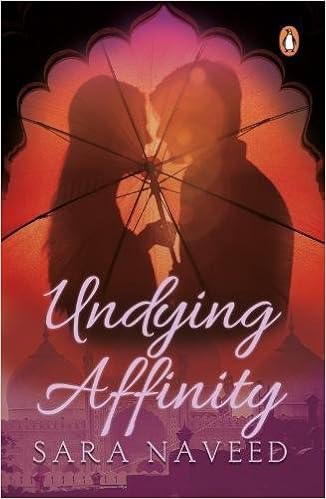
Rich, beautiful and popular Zarish Munawwar finds herself entangled in a web of passion with her attractive new professor, Ahmar Muraad, in this delicious new novel by the Pakistani queen of romance. Packed with romance, drama and tragedy, Undying Affinity will stay in your heart forever.
Reporting Pakistan by Meena Menon
Reporting from Pakistan is considered one of the more difficult-if exciting-assignments in journalism, more so for an Indian. Despite the limitations, Meena Menon, the Hindu’s correspondent in Islamabad until May 2014, has produced a probing, incisive portrait of a conflicted society; it is both nuanced and wide ranging and tries to look not just at politics-but also at the human realities beneath.
The Golden Legend by Nadeem Aslam
Against a background of violence and fear, the protagonists of The Golden Legend try to find an island of calm in which their love can grow. In his characteristically luminous prose, Nadeem Aslam reflects Pakistan’s past and present in a single mirror—a story of corruption, resilience and the hope that only love and the human spirit can offer.
Lahore in the Time of the Raj by Ian Talbot and Tahir Kamran
Lahore during the Raj was a prosperous and cosmopolitan place, where many communities lived together and there was a constant flow of goods, people and ideas. Talbot and Kamran bring to life the 1930s and 1940s, a time of intense cultural and political creativity where writers and artists flourished; where F.C. College and Government College were celebrated centers of learning and there was great engagement between Lahore and the nascent Bollywood film industry, unfortunately ended by the traumas of Partition.
Snuffing Out the Moon by Osama Siddique
2084 bce: In the great city of Mohenjodaro, along the banks of the Indus, a young man named Prkaa becomes increasingly mistrustful of the growing authority of a cult of priests.
2084 ce: A scholar revisits the known history of the cataclysmic events that led to world domination by ruthless international water conglomerates.
Spanning across epochs and civilizations, the characters in this stunning novel investigate the legitimacy of religion and authority and chronicle the ascent of dissent. Snuffing Out the Moon is a dazzling debut that is at once a cry for freedom and a call for resistance.
Military Inc.: Inside Pakistan’s Military Economy by Ayesha Siddiqa
Ayesha Siddiqa shows how the power of the military has transformed Pakistani society and where the armed forces have become an independent class. She examines this military economy and the consequences of merging the military and corporate sectors and analyses the internal and external dynamics of this gradual power-building and the impact that it is having on Pakistan’s political and economic development.
This House of Clay and Water by Faiqa Mansab
Set in Lahore, This House of Clay and Water explores the lives of two women: Nida, intelligent and lonely, has married into an affluent political family and is desperately searching for some meaning in her existence; and impulsive, lovely Sasha, from the ordinary middle-class, her longing for designer labels and upmarket places so frantic that she willingly consorts with rich men who can provide them. They meet at the famous Daata Sahib dargah and connect, their need to understand why their worlds feel so alien and empty, bringing them together. Faiqa Mansab’s accomplished and dazzling debut novel explores the themes of love, betrayal and loss in the complex, changing world of today’s Pakistan.
The Last Vicereine by Rhiannon Jenkins Tsang
Set amid the turmoil of Partition, The Last Vicereine is the heartbreaking story Edwina Mountbatten, a rebel, rule-breaker, troubled soul and great beauty, and Jawahar, her friend, confidant and the only one to truly understand her for who she was. It is also the incredible tale of the birth of two nations, of love, grief, tragedy, inhumanity and the triumph of hope.
Defeat is an Orphan: How Pakistan Lost the Great South Asian War by Myra Macdonald
This essential account by a former correspondent for Reuters and a South Asia specialist tracks the defining episodes in the relationship between India and Pakistan from 1998, from bitter conflict in the mountains to military confrontation in the plains, from the hijacking of an Indian airliner to the Mumbai attacks.
This Wide Night by Sarvat Hasin
In the quietly seething world of This Wide Night, The Virgins Suicides meets Little Women in Pakistan. Tracing the lives of the four beautiful Malik sisters, Maria, Ayesha, Leila and Beena in the 1970s, and moving from Karachi to London to the rain-drenched island of Manora, here is a compelling new novel from the subcontinent—and a powerful debut to watch.
Mr and Mrs Jinnah: The Marriage that Shook India by Sheela Reddy
Mohammad Ali Jinnah was forty years old, a successful barrister and a rising star in the nationalist movement when he fell in love with pretty, vivacious sixteen-year-old Ruttie Petit, the daughter of his good friend, the fabulously rich baronet, Sir Dinshaw Petit, a prominent Parsi mill owner. Despite her outraged father forbidding the match, they married when Ruttie turned eighteen and Bombay society, its riches and sophistication notwithstanding, was scandalized. A product of intensive and meticulous research in Delhi, Bombay and Karachi and based on first-person accounts and sources, Reddy brings to life the unforgettable love story of the solitary, misunderstood Jinnah and the lonely, wistful Ruttie.
Indus Divided: India, Pakistan and the River Basin Dispute by Daniel Haines
The Indus Waters Treaty is considered a key example of India–Pakistan cooperation, which had a critical influence on state-making in both countries. Indus Divided reveals the importance of the Indus Basin river system, and thus control over it, for Indian and Pakistani claims to sovereignty after South Asia’s partition in 1947, and examines the discord at local, national and international levels, arguing that we can only explain its significance and longevity in light of India and Pakistan’s state-building initiatives after independence.
Pakistan’s Nuclear Bomb: A Story of Defiance, Deterrence and Deviance by Hassan Abbas

This book provides a comprehensive account of the mysterious story of Pakistan’s attempt to develop nuclear weapons in the face of severe odds. Hassan Abbas profiles the politicians and scientists involved, and the role of China and Saudi Arabia in supporting Pakistan’s nuclear infrastructure. Abbas also unravels the motivations behind the Pakistani nuclear physicist Dr A.Q. Khan’s involvement in nuclear proliferation in Iran, Libya and North Korea, drawing on extensive interviews.
Remembering Partition: Limited Edition
The dawn of India’s freedom was stained by the Partition and its accompanying violence, which rent the subcontinent. Seventy years later, the nations that came into being are still to fully overcome a persistent sense of anger and loss. The five iconic books in this collection look at the different faces of Partition, from the larger political and historical view to the very personal tales of hatred, grief, courage and friendship. Together, they commemorate one of the most defining moments of our history whose reverberations are felt to this day.
Ice-Candy-Man by Bapsi Sidhwa
Young Lenny Sethi enjoys a happy, privileged life in Lahore in the 1940s. Kept out of school because she suffers from polio, she spends her days with Ayah, her beautiful nanny, who attracts several admirers. But with the abduction of her beloved Ayah, Lenny’s world soon erupts in racial and religious violence. Widely hailed as one of the most powerful novels on the Partition, Ice-Candy-Man offers an intimate glimpse into a colossal upheaval through the eyes of a precocious child.
In Freedom’s Shade by Anis Kidwai
In Freedom’s Shade is Anis Kidwai’s moving personal memoir of the first two years of new India. With a rare frankness, sympathy and depth of insight, Kidwai tells the stories of the thousands who were driven away from their homes in Delhi and its neighbouring areas by eviction or abduction or the threat of forced religious conversion. Recounting the activities of the Shanti Dal and the recovery of abducted women, she reveals both the architecture of the violence during Partition as well as the efforts of ordinary citizens to bring to a close the cycle of reprisal and retribution. This searching book is a reminder that memory without truth is futile; only when it serves the objective of reconciliation does it achieve meaning and significance.
The Great Partition by Yasmin Khan
The Partition of India in 1947 was one of the most horrific events of decolonization in the twentieth century, bringing death, rape and plunder in its wake. In The Great Partition, Yasmin Khan exposes the widespread ignorance of what the Partition would entail in practice as well as the haste and recklessness with which it was completed. Drawing on fresh information from an array of sources and underscoring the catastrophic human cost involved, Khan provides an authoritative and accessible analysis of this cataclysmic event and its devastating legacy.
Jhootha Sach by Yashpal
Jhootha Sach is arguably the most outstanding piece of Hindi literature written about the Partition. Vividly evoking life in Lahore as it was before 1947, the novel abounds with a rich array of characters whose lives unfurl dramatically in the city’s crowded streets: Tara, who wants an education, and not marriage; Puri, whose ideology and principles often come in the way of his impoverished circumstances; Asad, who is ready to sacrifice his love for the sake of communal harmony. Their destinies are irrevocably altered on the eve of Independence when the ensuing carnage shatters the beauty and peace of the land, killing millions of Hindus and Muslims, and forcing others to leave their homes forever.
Spectacular in scope and deeply insightful in its depiction of human frailty and malice, Yashpal’s controversial novel is a politically charged, powerful tale of human suffering.
Train to Pakistan by Khushwant Singh
The fact is both sides killed. Both shot and stabbed and speared and clubbed. Both tortured. Both raped.
It is the summer of 1947. But Partition does not mean much to the villagers of Mano Majra, a village on the border of India and Pakistan. Then, a local moneylender is murdered, and suspicion falls upon Juggut Singh, the village gangster who is in love with a Muslim girl. When a train arrives, carrying the bodies of dead Sikhs, the village is transformed into a battlefield and neither the magistrate nor the police is able to stem the rising tide of violence. Amidst conflicting loyalties, it is left to Juggut Singh to redeem himself and reclaim peace for his village.
So, which book are you going to pick?
A Recipe to Keep You Warm This Winter and Help You Tackle Diabetes
In Reversing Diabetes, Dr Nandita Shah provides a fresh and practical perspective on curing diabetes. She also elaborately breaks down the real cause of diabetes using scientific evidence and intelligently outlines a routine that will not just prevent the disease but also reverse it.
Here is an excerpt from the book on one of the recipes of the book, which will help you deal with diabetes.
Herbal Tea
Makes 2 cups
These are actually infusions. Here is a list of possible ingredients: lemongrass, mint leaves, tulsi leaves, ginger, cinnamon, cloves, cardamom, saffron, dried apple, lemon or orange peels, liquorice, dried chamomile flowers, anise seeds (saunf ) . . . the list is endless and you can use these as single flavours or in combinations. Cinnamon is good for diabetics and it also lends a sweet taste.
Here are a few combinations:
- Mint leaves, grated ginger, lemongrass, crushed black pepper
- Cinnamon, cardamom, cloves, anise seeds, liquorice
- Tulsi, ginger
- Tulsi, ginger, turmeric
- Saffron strands, cinnamon sticks, cardamom
- Dried orange, cinnamon
Ingredient:
1 tablespoon of your preferred ingredient
Method:
Put 1 tablespoon of the ingredient/combination into a teapot. Pour 2 cups of boiling water into it. Wait for 5–7 minutes, strain and serve.

Are you Connected? An Excerpt
Venugopal Acharya is a monk at the ISKCON and has spent eighteen years living with over 100 people in a small monastery. Prior to becoming a monk, he worked with an investment bank, and has an honours degree in economics, a Masters degree in international finance and an MBA in finance.
In his book, Are You Connected, Acharya emphasizes on sharing mutual success and growing with care and compassion. He shares the different skills and experiences that help one feel loved and in touch with one’s self, the people who matter and God. Here is an excerpt from the book:
In one of Shakespeare’s most powerful soliloquies, Hamlet, struggling with his private thoughts, asks himself:
What is a man, if his chief good and market of his time be
but to sleep and feed? A beast, no more. Sure, he that made
us with such large discourse, looking before and after, gave
us not that capability and God-like reason to fust in us
unused.
Prince Hamlet regrets that a man who simply eats, sleeps and carries on his life as an animal does no good to anyone. He reflects that God created us for a reason, and it’s up to each one of us to fulfil it.
We live, love and leave. We seek to live peacefully, in harmony, with who we truly are. We also desire to love and be appreciated by others. And for more evolved humans, to leave a legacy—to serve, add value—and to contribute to others’ happiness is as sacred a need. In other words we have three aspects to our existence—our relationship with ourselves, others, and with divinity, also referred to as God in most cultures, that transcends our matter-centred routine life.
There are many people who work hard for their family and have good friends, yet they feel a vacuum in their hearts. They wonder if they have chosen a wrong career or a partner. Thinking they are not doing things that truly represent their innermost values and purpose in life, they feel disconnected
from their own self.
There are, of course, some who do what they want, but realize over time that their relationships have suffered. After all, we need to love and feel loved. Despite measurable success and money, it’s love that we seek.
Marilyn Monroe, one of the most popular sex symbols of the 1950s, rose from a miserable childhood to Hollywood stardom. She always wanted to be an actor and she did become a legend. Yet, weeks before her death, suspected as suicide due to an overdose of drugs, she confessed in an interview, ‘I never quite understood this sex symbol. I always thought symbols were those things you clash together. That’s the trouble; a sex symbol becomes a thing. I just hate to be a thing . . .’ She got
what she wanted, but her heart remained starved of love. She felt disconnected.
A few people do manage to live on their own terms, and they also get love from others. Yet, an incompleteness stares at them until they seek a deeper relationship with their spiritual existence. A divine being, also known in various traditions as Bhagavan, Supreme Lord or the Almighty, is at the core of our existence. Our spiritual reality is as inseparable to us as sunshine is to the sun. Yet, we chose to be covered by the clouds of ignorance. Spiritual practices—meditation, prayer, chanting—help us dispel these clouds; they unravel the mysteries of our own identity; we connect to our eternal spiritual self and to God, our loving friend and parent. And as a by-product, we also bond with our fellow brothers and sisters on this planet. Spiritual practices flood our hearts with love and help us leave behind a legacy of love.
The articles compiled in this book have been categorized into two broad categories: One, connecting and succeeding with self, and two, living and growing with others.
The first section, ‘Connecting and Succeeding with Self’, contains twenty-seven articles that focus on transcending internal barriers to go deeper into the spiritual aspects of our lives. Likewise, under the second category, ‘Living and Growing with Others’, you’ll find twenty-nine articles on principles that could help us succeed in our relationships with others; so we can care, serve and love better. Altogether, these fifty-six articles are elaborations of the twenty-five keys, which form the base of a truly connected life.

How To Transform Society Dr APJ Abdul Kalam Way: ‘Mission India’ — An Excerpt
Dr.APJ Abdul Kalam’s benevolence and goodwill towards society is no news to us. The late President of India was a beautiful boon that mankind witnessed. His ‘Mission India : A Vision for Indian Youth’ addresses the youth in their endeavour to contribute to the nation’s progress. The book also plays an important role in that it tells every individual and organisation how they can shape and transform the nation by 2020.
Read the excerpt below to remember this amazing soul!
If you think about the development of human civilization, you will find that the pace of social and economic growth has been closely related to the proficiency with which people have been able to use the materials and chemicals in the world around them. In the beginning, this was through keen observation and trial and error. Thousands of years ago, men and women discovered, perhaps by accident, that they could hunt more easily if they sharpened rocks into weapons. They discovered that certain herbs helped to heal wounds. Once they discovered these properties of the materials around them, they remembered these and started using them. Their knowledge of these few things was slowly extended to others. As more and more knowledge was accumulated, human civilization as we know it today developed. Think about all the things you take for granted, as a normal part of life. Do you know it was only about two hundred
years ago that man started using coal and oil as energy sources to run machinery? The railways were invented. As a result, man could transport raw materials from far away to create new products and also sell them in distant places. It thus became very easy for goods to be transported, made easier still by the advent of the automobile and the aeroplane. Today, you can talk to people across the world from wherever you are—home, office, on a bus. But mobile phones were commercially available only from 1987. The first mobiles were available in India from 1994–95—and there were over 10 million users by 2002! Even something which seems as simple as a matchbox was only invented in the late nineteenth century—less than 120 years ago. Imagine how difficult it was to light a fire before that! Some ten years ago, the Internet became widely used. A vast world of information became available on the computer at the click of a mouse. As a result, knowledge flows so much easier. Sitting at your desk in India, you can find out about events and technologies all over the world. When I was writing this book, it was so much quicker for me to check the facts.
Ten years ago, it would have taken me ten times as long to write it, as I would have to go to many libraries and talk to many different people to get the same amount of information. The creation of so much technology is dependent on the creation of the advanced materials which are used to create computers, fibre optic cables, scanners and printers. Just imagine then, how different the world can be a hundred years from now! At the present rate of growth, in twenty years we can have trains that will travel from Delhi to Mumbai in a few hours—there is talk already of trains that can move as fast as planes using electromagnetic technology, robots in every home that can do the housework, and computers that will write down your homework as you talk! In this exciting world of rapid change, you have many wonderful opportunities to change the world and change India, if you can think out of the box and work with technology!
There are so many new materials available nowadays which our grandparents did not have access to. Our houses are full of modern materials: stainless steel, fibre glass, plastics, musical
and audio-visual materials. In the world outside, there are so many new materials as well: lightweight, high-performance alloys help us build aircraft, satellites, launch vehicles and
missiles and various kinds of plastics. Think of all the things in your daily life which are made of plastic—and imagine a world without them. The better use a country can make of its materials and chemicals, the more prosperous it will be. These new materials can also help in making life easier in ways that were not thought of when they were being invented. The DRDO has developed at least fifteen promising life science spin-off technologies from what were originally defence projects, some of them missile programmes.
You must have heard of Agni, India’s indigenously produced intermediate-range ballistic missile, first test-fired in May 1989. For Agni, we at the Defence Research and Development Organization (DRDO) developed a new, very light material called carbon-carbon. One day, an orthopaedic surgeon from the Nizam Institute of Medical Sciences in Hyderabad visited my laboratory. He lifted the material and found it so light that he took me to his hospital and showed me his patients—little girls and boys who had polio or other problems, as a result of which their legs could not function properly. The doctors helped them to walk in the only way they could—by fitting heavy metallic callipers on their legs. Each calliper weighed over 3 kg, and so the children walked with great difficulty, dragging their feet around. The doctor who had taken me there said to me, ‘Please remove the pain of my patients.’ In three weeks, we made these Floor Reaction Orthosis 300-gram callipers and took them to the orthopaedic centre. The children could not believe their eyes! From dragging around a 3-kg load on their legs, they could now move around freely with these 300-gram callipers. They began running around! Their parents had tears in their eyes. An ex-serviceman from a middle-class family in Karnataka wrote to us, after reading about how we had assisted polio-affected children. He inquired if something could be done for his twelve-year-old daughter who was suffering from residual polio of the leg and was forced to drag herself with a 4.5-kg calliper made out of wood, leather and metallic strips. Our scientists invited the father and daughter to our laboratory in Hyderabad, and together with the orthopaedic doctors at the Nizam’s Institute of Medical Sciences, designed a Knee Ankle Foot Orthosis weighing merely 400 grams. The girl’s walking almost returned to normal using this. The parents wrote to us a couple of months later that the girl had learned cycling and started going to school on her own.
Dr.Kalam contributed immensely to development of the nation. Purchase your copy to read more on the man and his extraordinary talent and achievement in the field of science, education, society and so on.

Retaking A Tour Down Memory Lane With ‘The Guide’ — An Excerpt
The Guide, written by R K Narayan in 1958, celebrates the myriad mysteries and bizarre charms of India, as seen through the experiences of a small-town tour guide, Raju from Malgudi. The novel went on to be adapted on the silver screen and has been immortalised by Dev Anand and Waheeda Rehman, playing the protagonists Raju and Rosie respectively.
On R K Narayan’s 111th birth anniversary, here’s revisiting this timeless story that captures the crazy and magical spirit of India through its themes of love, loss, betrayal and the search for God.
Here’s an exclusive excerpt from the book.
RAJU WELCOMED THE intrusion—something to relieve the loneliness of the place. The man stood gazing reverentially on his face. Raju felt amused and embarrassed. ‘Sit down if you like,’ Raju said, to break the spell. The other accepted the suggestion with a grateful nod and went down the river steps to wash his feet and face, came up wiping himself dry with the end of a chequered yellow towel on his shoulder, and took his seat two steps below the granite slab on which Raju was sitting cross-legged as if it were a throne, beside an ancient shrine. The branches of the trees canopying the river course rustled and trembled with the agitation of birds and monkeys settling down for the night. Upstream beyond the hills the sun was setting. Raju waited for the other to say something. But he was too polite to open a conversation.
Raju asked, ‘Where are you from?’ dreading lest the other should turn round and ask the same question. The man replied, ‘I’m from Mangal.’
‘Where is Mangal?’
The other waved his arm, indicating a direction across the river, beyond the high steep bank. ‘Not far from here,’ he added. The man volunteered further information about himself. ‘My daughter lives nearby. I had gone to visit her; I am now on my way home. I left her after food. She insisted that I should stay on to dinner, but I refused. It’d have meant walking home at nearly midnight. I’m not afraid of anything, but why should we walk when we ought to be sleeping in bed?’
‘You are very sensible,’ Raju said.
They listened for a while to the chatter of monkeys, and the man added as an afterthought, ‘My daughter’s married to my own sister’s son, and so there is no problem. I often visit my sister and also my daughter; and so no one minds it.’
‘Why should anyone mind in any case if you visit a daughter?’ ‘It’s not considered proper form to pay too many visits to a son in-law,’ explained the villager.
Raju liked this rambling talk. He had been all alone in this place for over a day. It was good to hear the human voice again. After this the villager resumed the study of his face with intense respect. And Raju stroked his chin thoughtfully to make sure that an apostolic beard had not suddenly grown there. It was still smooth. He had had his last shave only two days before and paid for it with the hard-earned coins of his jail life.
Loquacious as usual and with the sharp blade scraping the soap, the barber had asked, ‘Coming out, I suppose?’ Raju rolled his eyes and remained silent. He felt irritated at the question, but did not like to show it with the fellow holding the knife. ‘Just coming out?’ repeated the barber obstinately.
Raju felt it would be no use being angry with such a man. Here he was in the presence of experience. He asked, ‘How do you know?’ ‘I have spent twenty years shaving people here. Didn’t you observe that this was the first shop as you left the jail gate? Half the trick is to have your business in the right place. But that raises other people’s jealousies!’ he said, waving off an army of jealous barbers. ‘Don’t you attend to the inmates?’ ‘Not until they come out. It is my brother’s son who is on duty there. I don’t want to compete with him and I don’t want to enter the jail gates every day.’

What Do Nicky and Noni Do When They Visit Their Grandparents?: ‘It’s Cool to Respect Others’ — An Excerpt
In Sonia Mehta’s It’s Cool to Respect Others from her new series of books — My Book of Values, the author reminds us as to why having some values in life is totally cool!
Nicky and Noni do not seem to be too enthusiastic about visiting their grandparents. Why? What uncool things do they do which no one approves of? Let’s find out!




Do Nicky and Noni realise their mistake? Find out with It’s Cool to Respect Others!









